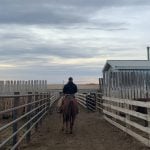DraganFly Innovations of Saskatoon will bring its new aerial photo plane to market this spring.
This purpose-built airframe, held aloft by four wings, has been specifically engineered for low speed surveillance flight with autopilot and fully geo-referenced aerial photo capability.
DraganFly owner and engineer Zenon Dragan says the plane is targeted at clients who need a stable platform for high quality on their aerial photo missions.
“We are in the business of designing, building and selling remote control flying machines with cameras,” Dragan said.
Read Also

VIDEO: Green Lightning and Nytro Ag win sustainability innovation award
Nytro Ag Corp and Green Lightning recieved an innovation award at Ag in Motion 2025 for the Green Lightning Nitrogen Machine, which converts atmospheric nitrogen into a plant-usable form.
“That’s what we do. We’ve had a number of airplanes and helicopters on the market for some time, for hobbyists and commercial clients.”
Dragan said there are two groups of customers for working aircraft: the military and police and those that need high quality aerial photography, such as agriculture.
“Our flying machines are used in border patrol, real estate, construction, surveying, security, search, mapping. There are a lot of people who use these machines as part of their job. That’s why we decided we had to design a purpose-built working airplane. This isn’t for hobbyists. This is for people who need to get a job done.”
Dragan said the unusual-looking airframe is stable and easy to fly compared to conventional designs. It can be made to stall if the airspeed is slowed enough, but it won’t go into a spin.
“Normally, when an airplane stalls, one wings tips and pulls the aircraft into a deadly spin. Our design won’t do that. Instead, it mushes down. The nose stays pointed straight ahead and it floats down to the ground.”
He said the efficient airframe concept, coupled with the latest electric motors and lithium polymer batteries, give the craft a normal operating time of three hours. If necessary, it can be programmed to fly for six hours continuously, which is possible in part because low air friction and low speed consume less battery power.
The DraganFly is only available with an electric motor.
“Nobody wants to fool around with gas motors anymore,” Dragan said.
“We have full blown GPS on board. You plug your navigating and aerial photo instructions into your laptop and then send the airplane away to do its work. Then you can go do something else. It will come home and land when the mission is complete. It’s virtually the same as the military drones.”
For the operator who wants to know what’s happening with his airplane every moment of the mission, DraganFly has a video transmitter that plugs into the on-board still camera, which allows the operator to see everything the airplane sees in real time.
The craft comes equipped with a 7.1 megapixel camera as standard equipment. It is fully GPS geo-referenced so every photo can be identified and layered onto a map.
The autopilot is connected to the GPS navigational system and to a thermal intelligence system that keeps it flying level. Except for the airframe, all other components come from hobby shops and electronics suppliers.
Dragan said there is plenty of payload capacity if a client has more equipment that needs to go airborne.
The agricultural DraganFly is expected to carry a list price of about $10,000 US, which will include the aircraft, hand held controller, camera equipment, autopilot, thermal sensors and related software.















